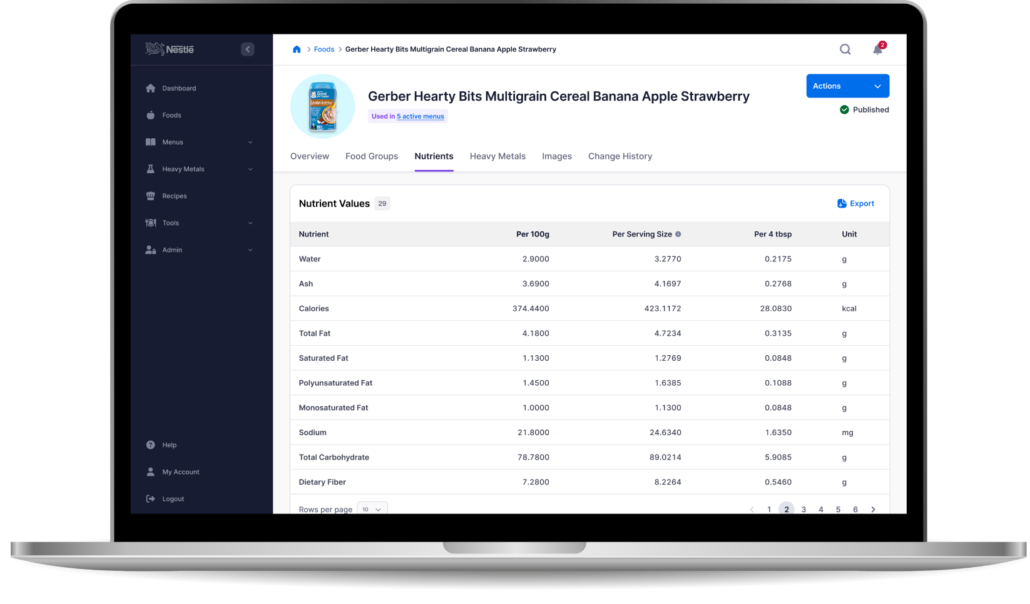
Nestlé, a global leader in food and beverage, was using an outdated application to manage product data and create nutritionally-balanced food menus for infants and toddlers. The software had become so cumbersome that it was actually more efficient for employees to manually create menus outside of the system. At the same time, California pass bill AB 899, which requires baby food manufacturers to publish heavy metal testing results. Therefore, it was the perfect time to update the application to have this new functionality and make it even better. Now, it serves as a centralized product data management system, menu-creator, and heavy metal test manager.
Services
User research, Prototyping, Usability testing, Developer handoff, Development, UX support
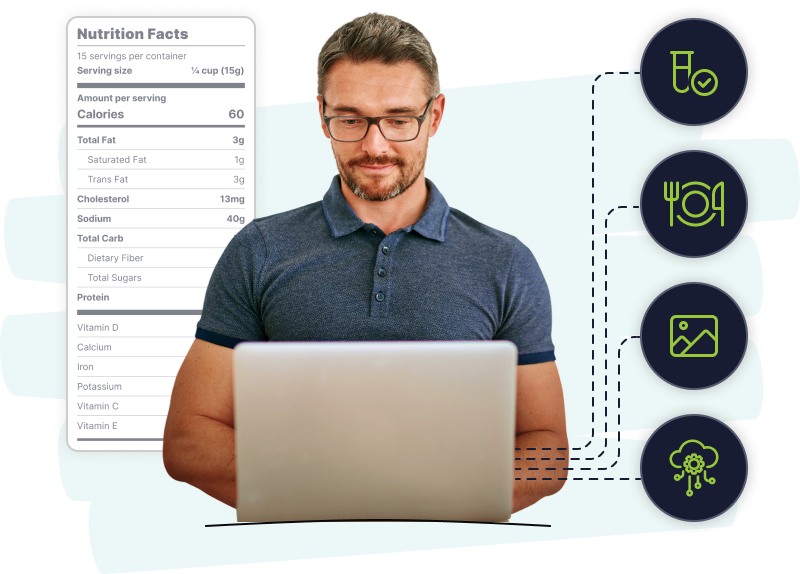
Upload and manage test results
Design a solution to easily upload, validate, and control heavy metal test result data.
Create an API for data access
Design and develop an API that enables secure, reliable external access to data.
Streamline data management




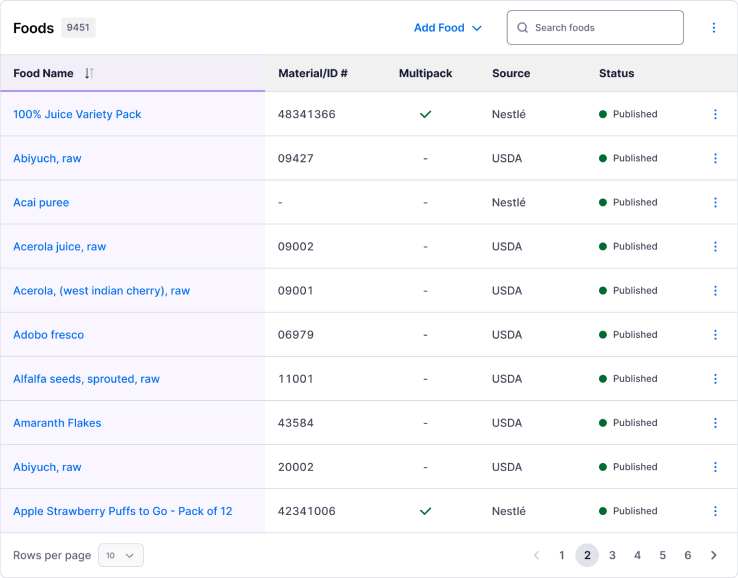

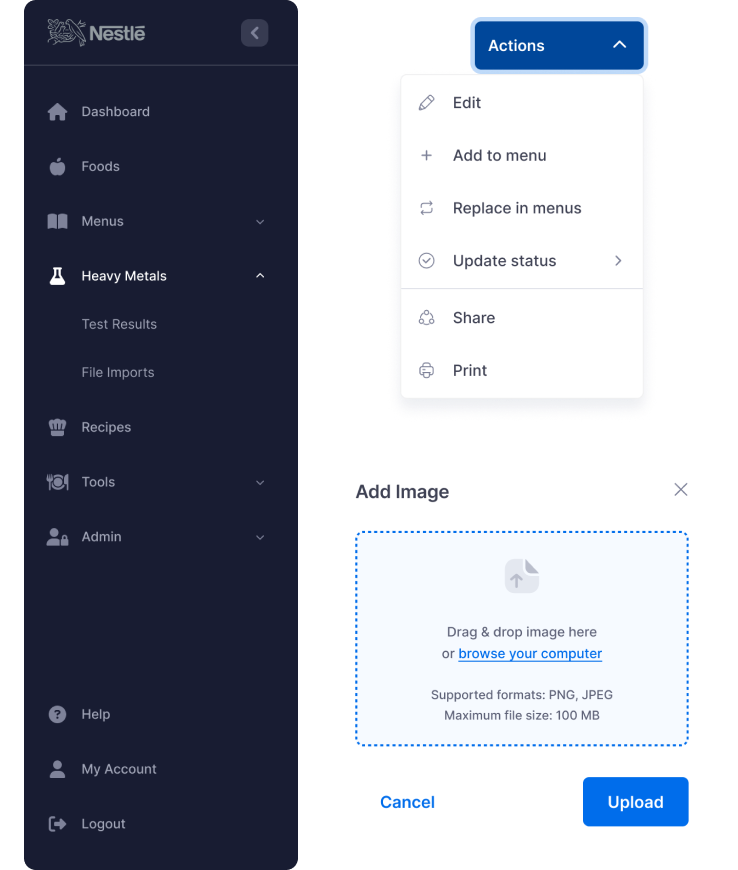
Purpose of our research
By understanding how the existing application is used, user behavior, and business requirements, we can gather insights to ensure our design decisions align with both user and business goals. Through our research, we aimed to:
Studies

In our design, once a file is uploaded, the system automatically checks for inaccuracies. The imported data is then displayed to users to review or take further action on before publishing it for API use. If inaccuracies are found, the system separates the problematic data from the clean data, allowing users to either correct the issues before publishing or remove the invalid records.
To unpublish results, users can do so manually, or once they expire, they are automatically removed from API use and archived. Automating this task reduces user responsibility and optimizes database performance.

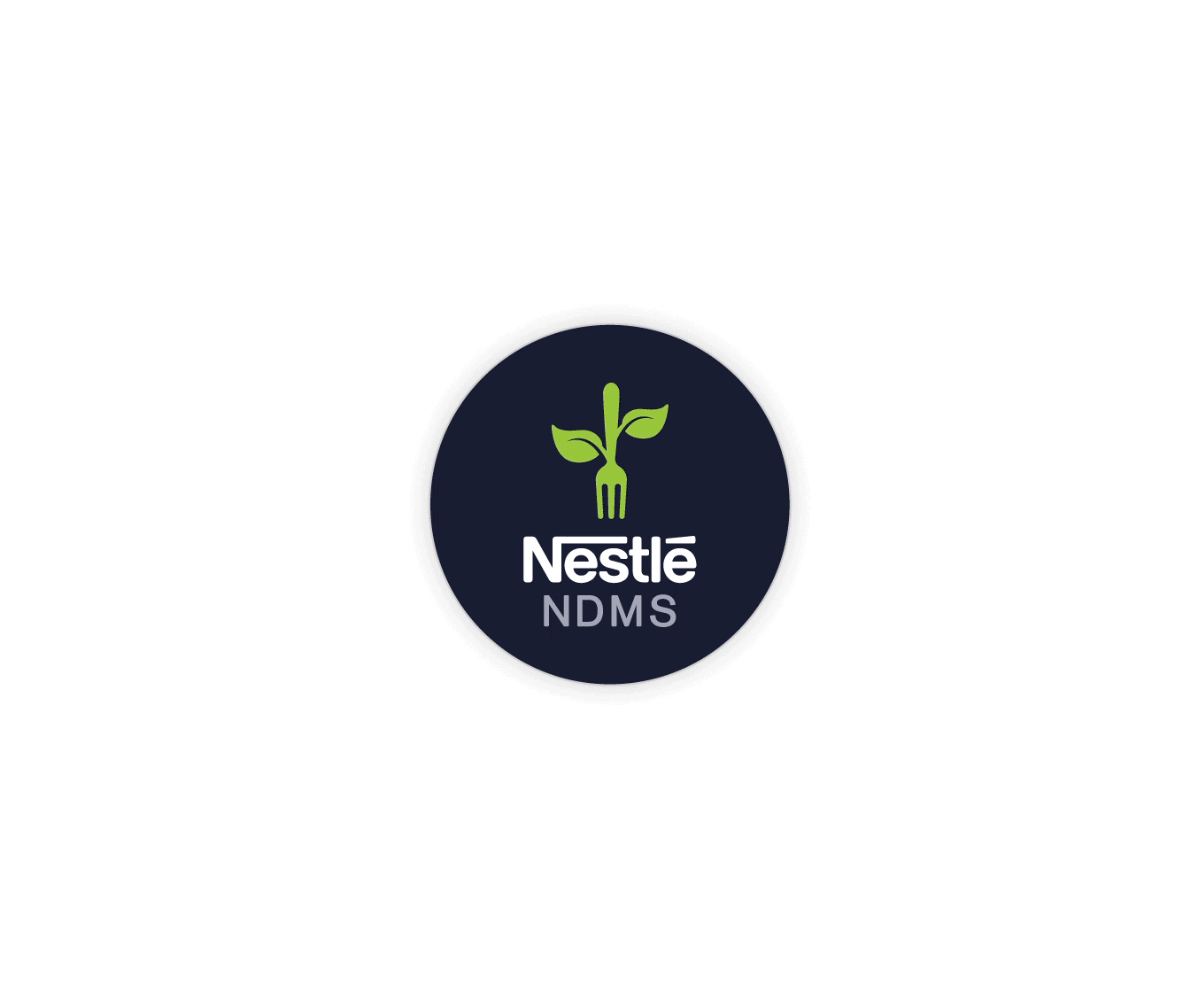
UX Team expanded the capabilities of a legacy Menu Planner application into a newly designed and developed Nutrition Data Management System (NDMS). This new application enables Nestlé employees to easily manage all data in one application instead of multiple disparate applications.
In addition, the data managed in this new application is fed to multiple public websites via an API. This not only allows all product nutrition data to be immediately updated with the click of a button but it also ensures that all data is consistent, error-free, and well-organized.
Need for enhanced data filtering capabilities
In the legacy application, users had to run reports to generate a filtered list of products based on specific attributes. This process was not only inefficient but also lacked the level of granularity users required.
With the new system, users can bypass the reporting module entirely, as the product listing now offers a comprehensive range of filters. This enables users to quickly narrow down products based on one or more attributes. Additionally, we’ve integrated export functionality throughout the system, making it easy for users to download data whenever needed.

Part of this project involved redesigning and developing two external tools: Allergen Finder and Nutrient Profiles. Both tools are featured on Gerber Medical Hub, but they were built in Nestlé’s legacy system, and products were not always up to date and the functionality was not always reliable.
Using the newly implemented API, we can provide users with accurate and up-to-date product information that healthcare professionals need to inform their patients with specific dietary needs. By incorporating the same powerful reporting features found in the new system, the API also enabled us to develop both tools in Medical Hub that deliver an efficient and cohesive user experience on their website.
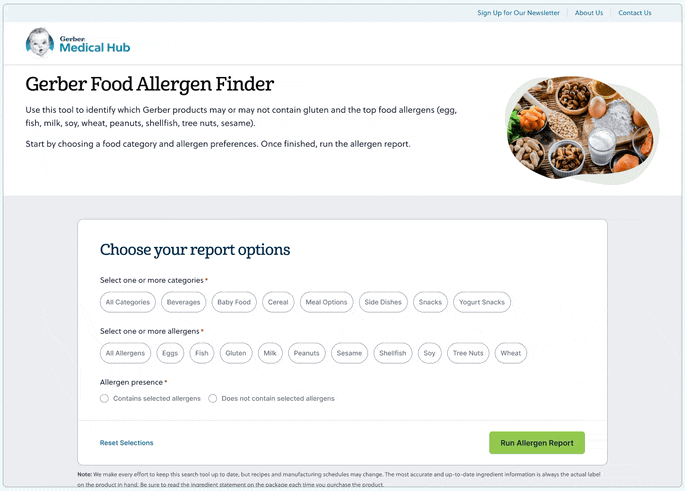
Reporting powered by the new NDMS
UX Team transformed a legacy application into a robust, centralized data management system designed for efficient data uploads, improved data control, and API integration. Our solution introduced automated data checks and real-time validation to ensure compliance with California’s heavy metal testing regulations. By modernizing system functionality, we streamlined workflows and established a scalable foundation for future enhancements.

Contact us for help with your enterprise software design.

| Cookie | Duration | Description |
|---|---|---|
| cookielawinfo-checkbox-analytics | 11 months | This cookie is set by GDPR Cookie Consent plugin. The cookie is used to store the user consent for the cookies in the category "Analytics". |
| cookielawinfo-checkbox-functional | 11 months | The cookie is set by GDPR cookie consent to record the user consent for the cookies in the category "Functional". |
| cookielawinfo-checkbox-necessary | 11 months | This cookie is set by GDPR Cookie Consent plugin. The cookies is used to store the user consent for the cookies in the category "Necessary". |
| cookielawinfo-checkbox-others | 11 months | This cookie is set by GDPR Cookie Consent plugin. The cookie is used to store the user consent for the cookies in the category "Other. |
| cookielawinfo-checkbox-performance | 11 months | This cookie is set by GDPR Cookie Consent plugin. The cookie is used to store the user consent for the cookies in the category "Performance". |
| viewed_cookie_policy | 11 months | The cookie is set by the GDPR Cookie Consent plugin and is used to store whether or not user has consented to the use of cookies. It does not store any personal data. |